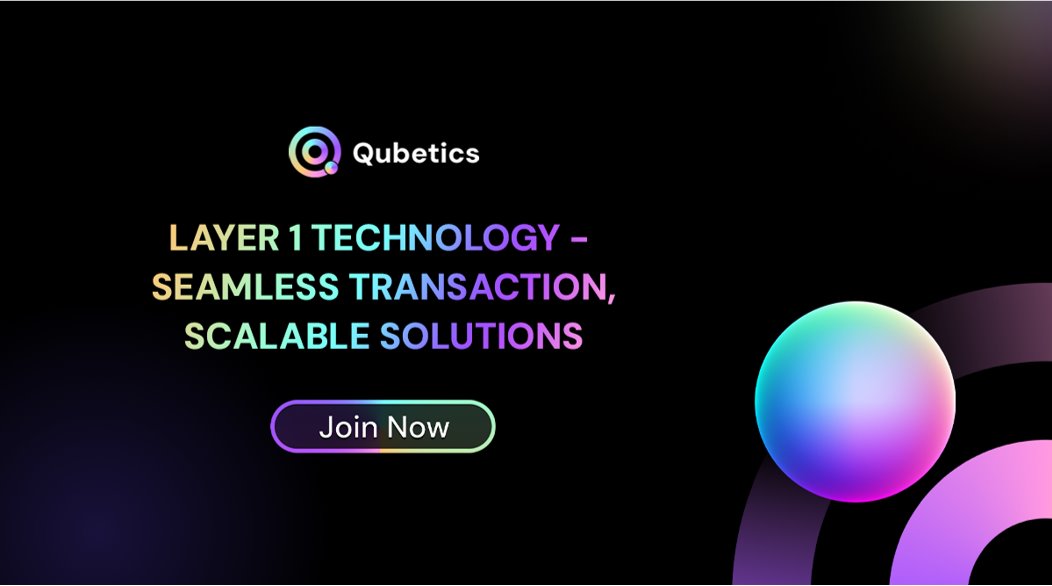As blockchain technology advances, concerns over quantum computing’s potential to compromise the security of today’s encryption methods are becoming more relevant. Quantum-resistant protocols are becoming a must-have feature for future-proofing the safety of digital assets. Platforms like Kaspa, Monero, and Stellar are innovating in various ways. Still, Qubetics is emerging as a leader by adopting Quantum-Resistant Addressing alongside a comprehensive security framework. This technology ensures that even the most advanced quantum computers won’t compromise blockchain integrity.

Let’s examine these platforms and consider how Qubetics’ innovations in quantum-resistant security stand out in today’s rapidly evolving landscape.
Qubetics: Leading the Charge with Quantum-Resistant Addressing
Qubetics is distinguishing itself from other blockchain platforms by proactively addressing the looming threat of quantum computing. Quantum-resistant addressing is a standout feature in its architecture, utilizing Post-Quantum Cryptography (PQC) to safeguard transactions and user identities. This quantum-resistant system employs a variety of advanced cryptographic algorithms, including lattice-based, hash-based, and multivariate polynomial cryptography, ensuring that the blockchain remains secure even against quantum-level threats.
Key Security Features of Qubetics:
- Quantum Resistance:
Qubetics is built with quantum resistance in mind, adopting cryptographic algorithms that can withstand attacks from future quantum computers. By employing post-quantum cryptographic algorithms like lattice-based and hash-based methods, Qubetics ensures that user identities and transactions remain secure, even in a quantum-computing-dominated future. - Regular Algorithm Updates:
Qubetics continuously updates its cryptographic algorithms, ensuring the platform remains at the cutting edge of security advancements. This proactive approach helps the platform stay resilient against emerging quantum computing threats. - Security Audits:
Frequent security audits are conducted to test the platform’s defenses against quantum threats. These audits ensure that the platform is fortified against future quantum attacks, bolstering confidence among investors and users. - General Security Enhancements:
Beyond quantum resistance, Qubetics also implements Multi-Factor Authentication (MFA), End-to-End Encryption, and real-time monitoring to safeguard user accounts and transactions, providing an extra layer of security in today’s digital environment.
Kaspa: High-Speed Transactions for the Future
Kaspa (KAS) is a relatively new blockchain platform that’s gained attention for its structure, which allows multiple blocks to be added to the network in parallel. This unique architecture enables Kaspa to offer extremely fast transaction speeds without sacrificing decentralization. Kaspa focuses on scalability and efficiency, but with the growing threat of quantum computing, platforms like Kaspa will eventually need to implement quantum-resistant technologies to safeguard their networks.
Monero: Privacy First, Always
Monero (XMR) is one of the most well-known privacy-focused cryptocurrencies. By using advanced cryptographic techniques like Ring Signatures and Stealth Addresses, Monero obscures transaction details to ensure that the identities of senders and recipients and transaction amounts remain hidden. While Monero offers robust privacy features today, its future may depend on integrating quantum-resistant cryptography to protect its network from quantum attacks that could compromise user anonymity.
Stellar: Revolutionizing Cross-Border Payments
Stellar (XLM) is well-known for its mission to facilitate fast, low-cost cross-border payments. Due to its efficiency and low fees, Stellar has gained traction with banks and financial institutions, making it a strong player in the payments space. However, security remains a significant concern for such platforms. Quantum computing threatens existing encryption protocols, and it’s only a matter of time before platforms like Stellar must integrate quantum-resistant technologies to ensure long-term security. With its increasing adoption in mainstream finance, Stellar’s ability to adapt to new security standards, such as quantum-resistant cryptography, will play a crucial role in maintaining its position as a trusted platform for financial institutions.

The Investment Opportunity: Qubetics in Presale Phase 5
Qubetics is in Presale Phase 5, with tokens priced at $0.015972. With over $1.4 million raised from 1,048 holders, Qubetics attracts significant investor interest. If an investor purchases $200 worth of tokens at the current presale price, they will receive approximately 12,520 tokens. If Qubetics reaches $1, this investment could grow to $12,520, providing an impressive return of $12,320.
As quantum computing continues to evolve, platforms like Qubetics, with its quantum-resistant architecture, are positioning themselves as key players in the future of blockchain. The potential for substantial returns is significant for early investors, particularly with the upcoming 10% price increase in the next presale phase.
Conclusion: A Quantum-Resistant Future
In a world where quantum computing threatens to disrupt traditional cryptographic systems, platforms like Qubetics pave the way toward a quantum-resistant future. By integrating cutting-edge security features, including Quantum-Resistant Addressing, Qubetics is securing its position as a leader in blockchain technology, ensuring long-term resilience and investor confidence. With the rise of platforms like Kaspa, Monero, and Stellar, Qubetics is standing out by addressing one of the most critical challenges of the digital age—quantum security.
For More Information:
Qubetics: https://qubetics.com
Telegram: https://t.me/qubetics
Twitter: https://x.com/qubetics
Disclaimer: The statements, views and opinions expressed in this article are solely those of the content provider and do not necessarily represent those of Crypto Reporter. Crypto Reporter is not responsible for the trustworthiness, quality, accuracy of any materials in this article. This article is provided for educational purposes only. Crypto Reporter is not responsible, directly or indirectly, for any damage or loss caused or alleged to be caused by or in connection with the use of or reliance on any content, goods or services mentioned in this article. Do your research and invest at your own risk.

